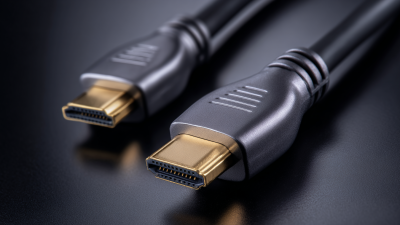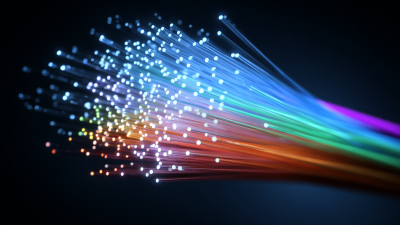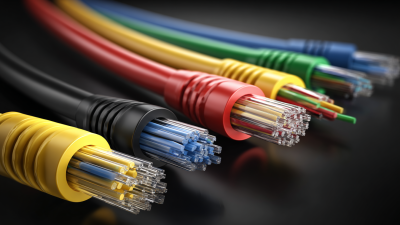Industries
Get direct access to our extensive portfolio of optical products and specialist technical expertise.
Get direct access to our extensive portfolio of optical products and specialist technical expertise.
In today's rapidly evolving digital landscape, the demand for high-speed internet connectivity is more pressing than ever. As traditional broadband infrastructures struggle to keep pace with this surge in data consumption, the focus is increasingly turning towards innovative solutions that can provide reliable, high-performance access. One of the most promising alternatives lies in the realm of fiber access, which significantly enhances connectivity options by leveraging advanced fiber optic technology.

This blog will explore unique alternatives for fiber access, examining how they can address the diverse needs of modern consumers and businesses alike. From point-to-point fiber installations to innovative wireless technology that complements fiber networks, we aim to unveil a spectrum of solutions designed to enhance connectivity and foster a more interconnected world.
Join us as we delve into the future of fiber access and its transformative potential in shaping modern communication infrastructures.
As the demand for seamless connectivity continues to rise, fiber access technologies play a pivotal role in shaping the future of modern communication. The landscape of fiber access is diverse, featuring a range of technologies such as Passive Optical Networks (PON), Gigabit-capable Passive Optical Networks (GPON), and point-to-point (P2P) fiber systems. Each of these solutions presents unique advantages and challenges, making it essential for businesses and municipalities to evaluate them based on their specific needs.
PON technology, for instance, allows multiple users to share the same fiber infrastructure, significantly reducing costs and simplifying deployment. However, its shared nature can result in fluctuating performance during peak usage times. In contrast, P2P systems offer dedicated bandwidth to each user, ensuring consistent high-speed performance, but at a higher installation cost due to the need for individual fiber runs. This in-depth comparison of fiber access technologies reveals not only the intricacies of installation and maintenance but also the long-term implications for scalability and user experience in an ever-connected world.
| Technology Type | Maximum Speed (Gbps) | Average Latency (ms) | Connectivity Range (km) | Installation Cost ($/km) |
|---|---|---|---|---|
| Fiber to the Home (FTTH) | 10 | 5 | 20 | 25,000 |
| Fiber to the Node (FTTN) | 1 | 10 | 2 | 15,000 |
| Fiber to the Curb (FTTC) | 2.5 | 7 | 5 | 20,000 |
| Fiber to the Building (FTTB) | 1 | 8 | 1 | 30,000 |
| Passive Optical Network (PON) | 10 | 5 | 10 | 25,000 |
When evaluating connectivity solutions, the cost-effectiveness of fiber versus alternative technologies is a critical factor. Fiber optics provide high-speed internet with unrivaled bandwidth; however, the installation costs can be significant. In contrast, wireless solutions or hybrid technologies often come at a lower upfront cost, making them attractive for businesses looking to optimize their budget. Careful consideration of long-term operational costs and potential scalability should be factored into this evaluation.
**Tip:** Always analyze your current and future connectivity needs before deciding. If your data demands are expected to grow, investing in fiber now may yield savings down the line.
Alternative connectivity solutions, such as fixed wireless or satellite, can be beneficial for remote or underserved areas where traditional fiber infrastructure is lacking. However, while they may offer lower initial costs, their reliability and speed can vary significantly. It's essential to weigh these factors against the specific use cases they intend to support.
**Tip:** Conduct a thorough comparison of service providers, including uptime guarantees and speed tests, to ensure the selected solution meets your requirements without hidden costs.
 In the evolving landscape of connectivity solutions, the performance metrics of fiber access and fixed wireless technologies stand at the forefront of discussion. Fiber access is renowned for its remarkable speed and reliability, often delivering gigabit-per-second data rates that leave fixed wireless in the dust. This substantial difference in bandwidth allows for smoother streaming and faster downloads, making fiber an attractive option for both businesses and homes looking to enhance their internet experience.
In the evolving landscape of connectivity solutions, the performance metrics of fiber access and fixed wireless technologies stand at the forefront of discussion. Fiber access is renowned for its remarkable speed and reliability, often delivering gigabit-per-second data rates that leave fixed wireless in the dust. This substantial difference in bandwidth allows for smoother streaming and faster downloads, making fiber an attractive option for both businesses and homes looking to enhance their internet experience.
Moreover, fiber access boasts lower latency compared to fixed wireless. Latency, the time taken for data to travel from the source to its destination, is critical for real-time applications such as gaming or video conferencing. With fiber’s superior performance, users experience less lag and interruptions, which can significantly impact productivity and satisfaction. On the other hand, fixed wireless may present challenges like susceptibility to weather interference and varying performance based on distance from the originating tower, making fiber access a more dependable choice for high-demand environments. As connectivity solutions continue to develop, understanding these performance metrics will be vital for users seeking optimal internet experiences.
As the demand for high-speed connectivity continues to surge, the scalability and installation challenges of fiber optic networks versus traditional cable networks become increasingly relevant. The free-space optical communication (FSO) market, valued at $0.81 billion in 2022, is projected to reach $3.79 billion by 2030, representing a robust compound annual growth rate (CAGR) of 21.33% from 2024 to 2030. This growth showcases the industry's shift towards innovative and flexible solutions that meet modern demands, overcoming traditional limitations in wired connectivity.
Meanwhile, the MPO fiber optic connector market is also seeing remarkable expansion, with predictions indicating an increase from $1.04 billion in 2025 to $4.11 billion by 2033, translating to an impressive CAGR of 18.84%. This growth underlines the essential role of high-density connectors in facilitating the installation of fiber networks, especially in data centers where space and efficiency are paramount. The potential of modern data center optical channel switches is being unlocked by advancements such as high-speed optical interfaces and AI-driven network optimization, paving the way for seamless integration with technologies like edge computing and 5G. These innovations are crucial as they address both scalability and installation challenges, effectively redefining the landscape of connectivity solutions.
As we delve into the realm of innovative fiber alternatives, a spotlight falls on the transformative technologies reshaping connectivity solutions. Emerging from various industries, these technologies utilize plant-based waste and by-products to create sustainable materials, reflecting a broader movement toward responsible production practices. With the adoption of Industry 4.0 principles, companies can leverage data-driven insights to enhance efficiency and minimize waste, fundamentally altering the landscape of textile manufacturing and fiber production.

The integration of sustainability into fiber access highlights the urgency of addressing environmental challenges while meeting growing consumer demands. Innovations such as waterless dyeing and the use of recycled fibers are pivotal in reducing the carbon footprint associated with traditional textile processes. Moreover, the exploration of mycelium as a material demonstrates the potential of biobased alternatives not only to mitigate waste but also to introduce novel products into the market. As these developments unfold, they underscore the essential role of creativity and technology in redefining connectivity and material applications for the future.





